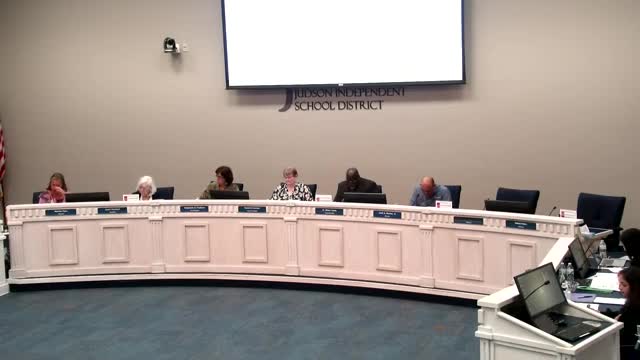School budget crisis sparks urgent call for administrative cuts
July 19, 2024 | JUDSON ISD, School Districts, Texas

This article was created by AI summarizing key points discussed. AI makes mistakes, so for full details and context, please refer to the video of the full meeting. Please report any errors so we can fix them. Report an error »

In a recent government meeting, school district officials discussed significant budgetary increases and administrative staffing ratios, highlighting the need for efficiency amid rising expenditures. The fiscal year has seen a notable increase in budget allocations, reaching 15.1%, prompting scrutiny of how funds are distributed, particularly concerning salaries and benefits for school leadership.
The conversation centered on the allocation of funds primarily for principals, assistant principals, and front office staff, with a clear distinction made regarding the inclusion of academic deans and coaches, which fall under different funding categories. Officials emphasized the importance of understanding the budget's structure to ensure transparency and accountability.
A key point of discussion was the staffing ratios at elementary and middle schools. Currently, the district maintains a ratio of one principal and one assistant principal for every 950 elementary students, a standard practice echoed across neighboring districts. However, middle school staffing ratios raised concerns, as the district allows one principal and three assistant principals for up to 1,200 students, which appears higher than comparable districts where the ratio is often one principal and two assistant principals for schools with fewer than 1,000 students.
Officials acknowledged the financial implications of these staffing models, noting that reducing administrative positions could lead to significant savings. The discussion included a call to explore alternative staffing models used by other districts to potentially streamline administrative costs without compromising educational quality.
The meeting concluded with a consensus on the need for further analysis of staffing ratios and budget allocations, particularly in light of the district's growing financial obligations. As the district navigates these challenges, officials remain committed to ensuring that administrative support aligns with the educational needs of students while maintaining fiscal responsibility.
The conversation centered on the allocation of funds primarily for principals, assistant principals, and front office staff, with a clear distinction made regarding the inclusion of academic deans and coaches, which fall under different funding categories. Officials emphasized the importance of understanding the budget's structure to ensure transparency and accountability.
A key point of discussion was the staffing ratios at elementary and middle schools. Currently, the district maintains a ratio of one principal and one assistant principal for every 950 elementary students, a standard practice echoed across neighboring districts. However, middle school staffing ratios raised concerns, as the district allows one principal and three assistant principals for up to 1,200 students, which appears higher than comparable districts where the ratio is often one principal and two assistant principals for schools with fewer than 1,000 students.
Officials acknowledged the financial implications of these staffing models, noting that reducing administrative positions could lead to significant savings. The discussion included a call to explore alternative staffing models used by other districts to potentially streamline administrative costs without compromising educational quality.
The meeting concluded with a consensus on the need for further analysis of staffing ratios and budget allocations, particularly in light of the district's growing financial obligations. As the district navigates these challenges, officials remain committed to ensuring that administrative support aligns with the educational needs of students while maintaining fiscal responsibility.
View full meeting
This article is based on a recent meeting—watch the full video and explore the complete transcript for deeper insights into the discussion.
View full meeting
